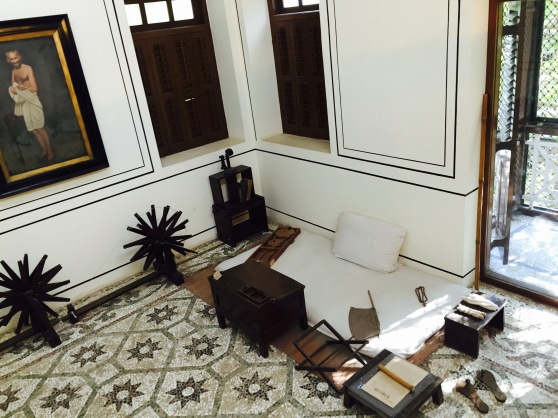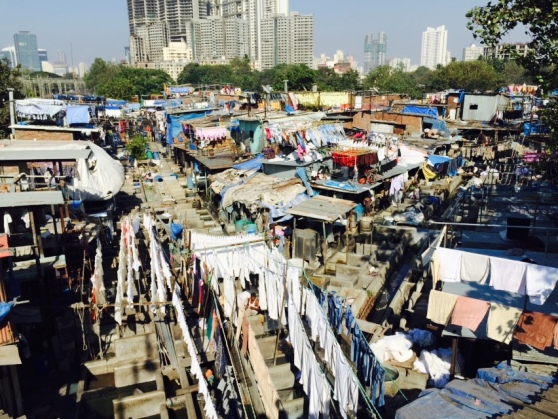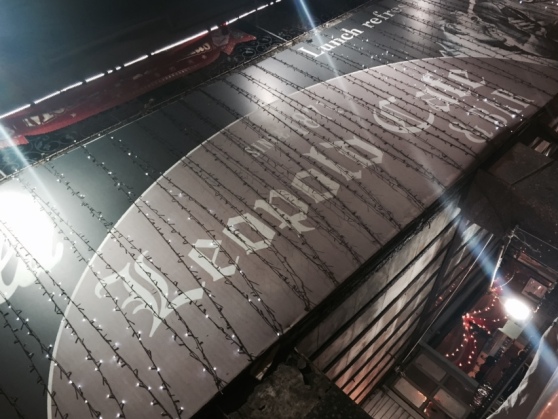We flew to Mumbai from Kochin, in Kerala for about £75 on Spice Air or something of that ilk. As we didn’t have long in Mumbai, we decided to hire a private guide and driver for the day through Mumbai Moments, which had great reviews on Tripadvisor. This is an expensive way to see the city, but with only 1 full day, a guided tour is easiest way to expose yourself to as much as physically possible. In hindsight, I should have arranged a 1 day Intrepid our, as they really give you a great insight in to daily life and show you all the hidden treasures, rather than just the main monuments etc, but such is life.
Amish through Mumbai Moments was great to deal with, even corresponding with me at 1am, but I was left feeling a bit like I had just driven round for the day seeing all the buildings the British had built, which in most cases were the most beautiful things in the city but didnt give me a true feel of the real Mumbai. I was left feeling decidedly un-informed and without much appreciation for the culture of the region – I guess that’s down to me to read up a bit more or spend more time there.
The guide was a lovely young friendly guy called Mobin, with good English; he and the driver took us around the following:
Gateway of India:
This is apparently one of India’s most treasured monuments. It was built to commemorate the visit of King George V and Queen Mary in March 1919. It is a large arch, 26m height. It contains Indo-Saracenuc and muslim architectural styles and is designed with 4 turrets and one main gateway, to welcome and send off ships from the sea which lies ahead.
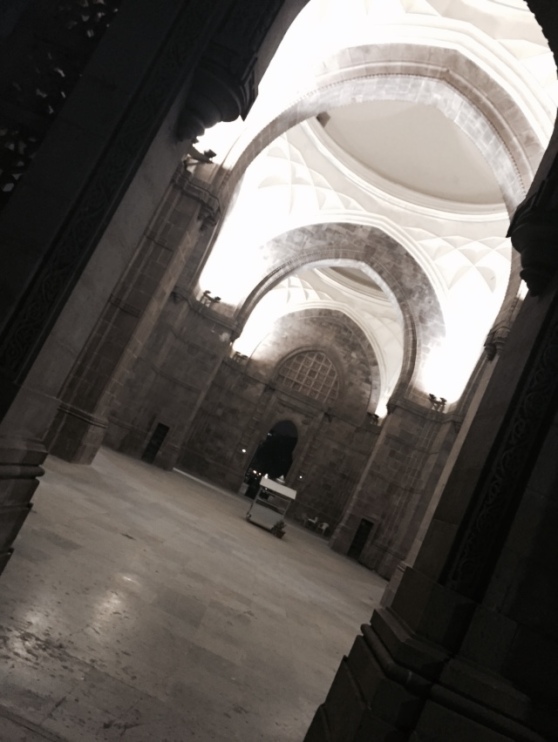
Mani Bhawan (Gandhi’s house):
This small house in a nice area of Mumbai was the place where Ganhi used to stay when he visited Mumbai. It is said that it was there that he laid the foundations for all his independence movements between 1917-1934, such as Non-Cooperation, Satyagraha, Swadeshi and Khadi. The building was also the location he performed his 4 day fast in 1921 to restore peace in Mumbai.
The house has been turned in to museum, where people from around the world come to pay homage. The walls and staircases are lined with photos, quotes and information about the life and activities of Gandhi, including the devlopment of the current national flag. So, from the perspective of a Gandhi novice, it was pretty informative and well worth a visit.
Hanging gardens:
These were built in 1880, known for their green vegetation (rare in Mumbai) and animal shaped hedges. For Mumbai, these gardens provide a break from the hustle and bustle of the city and locals use it as an opportunity for a bit of peace and quiet. They are situated up high, with views of the Mumbai coast line, Chowpatty beach and the Arabian sea. They are reputedly the ‘most amazing gardens of Mumbai’ and they probably are. Coming from England and being spoilt with our penchant for landscaping and gardening, as well as and our hundreds of National Trust sites, it was a bit of a bust. What was pretty cool, was the numerous eagles constantly flying overhead looking for scraps for the picnic leftovers.
Victoria Train Station
Spectacular train station built in 1878 and took 10 years by the British – it looked rather like St Pancras – so while impressive, it just felt like I was in London. It is quite strange to see such magnificent and familiar architecture dotted around the otherwise dirty and decaying streets of Mumbai, they really stand out and have been preserved better than anything else that stands.
This train station is now called Chhatrapati Shivaji Terminus, as the government decided to change all previous British names, however the locals still call everything by the old British names so it was kind of a waste of time (same as them still calling Mumbai by the old name, Bombay). This station was the first passenger train service in India and was also apparently the first truly public building in Mumbai. When the station became the target of the terrorist attacks in 2008 (as well as numerous 5 star hotels) while most locals had not seen the inside of the hotels, everyone had walked the platforms of the station, and they felt as though the heart of Mumbai had been targeted.

Crawford market
Opened in 1869 this famous market sells everything from fruit and veg, to spices and kittens (so sad). Endangered and illegal species are also sold here, though i didnt see any, fortunately. After Independence, the government changed the name to Mahatma Jyotirao – but as with everything else, the locals still call in Crawford market. I got completely carried away – and ripped off – buying spices here, but they looked and smelled great, so it was worth it. Once I have gotten over eating curry for breakfast lunch and dinner (in about 6 months time) I will enjoy putting them to good use.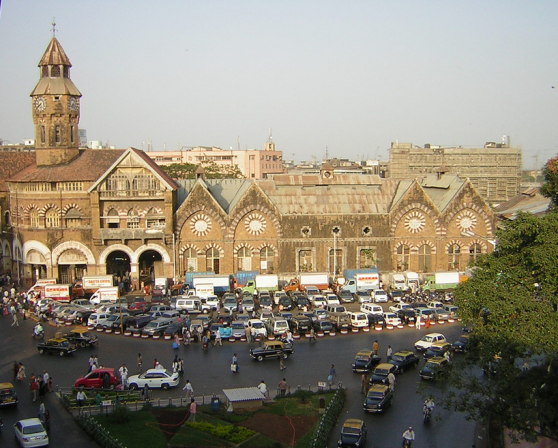
This is a famous open air laundry slum. They collect laundry from peoples houses, wash and dry in some magically organised way and deliver it all back to the correct people for the cheapest price imaginable. The workers live and work onsite. Stubborn stains are removed by soaking in a boiling vat of caustic soda and drying takes place on brightly coloured washing lines, in amongst all the chaos and pollution of the city. The locals apparently find it amusing that this phenomenon causes so much interest, but it is quite a sight to see.
Marine drive, Chowpatty beach:
Marine drive is a 4.3km boulevard in a C shape and is also known as the Queens necklace, because if viewed at night from above, it resembles a string of pearls. The promenade is tree lined and at the northern end is Chowpatty beach, where locals like to hang out day and night. It is famed for its Bhel puri (street food). You cannot go in the sea in this area because it is so polluted.
Leopold’s cafe (from the book Shantaram):
Where the book Shantaram was written and many scenes took place. I had a lassi here and it was rammed with tourists and locals alike.
We spotted some red double decker buses and old style phone boxes, which were rather novel.
Some of the other sites we were taken to were less impressive and I could have done without them in exchange for just a walking tour through the streets to get a real feel for the city. What I did take away was the relentless and oppressive noise, and the sheer number of people who live there. It is a hard life in Mumbai. People move from all across India to get work, and like New York, it is seen as the city of dreams as it is reputed that no one goes hungry. The reality is people will work all day, 12 or 14 hours, in exchange for a meal. So, no you don’t go hungry, but you work all day for a meal and you live on the pavement under some tarpaulin. There is of course huge comparative wealth here, but the poor are far more plentiful from first observation.
As you walk around, everyone is vying for your attention; to make a sale, to beg for money, to ask you a question, to get you in to their shop, to just stare. It’s like Bangkok on acid. It is everything I expected from India and did not endear me to the country. Noise, pollution, congestion, dirt and people on people on people. The traffic is horrendous, like English rush hour times a million, but all day, every day. It is so bad the government have decided to implement a day on/day off traffic control system. Cars will be registered with either 01 / 02 or registration. On some days only cars with 01 will be allowed on the road, and vise versa (that’s my summary of the process).
I don’t appreciate cities at the best of times and only a few cities have captured my heart throughout my life and travels – Bangkok, New York, Amsterdam. Generally I prefer open spaces, quiet, greenery and water, the less westernised the better – no electricity, no toilet, fine. Crowds of people, noise, congestions, traffic, dirt are certain to turn me off. So while it was good to see Mumbai (or Bombay to be local) it is not somewhere I would return to in a hurry.

